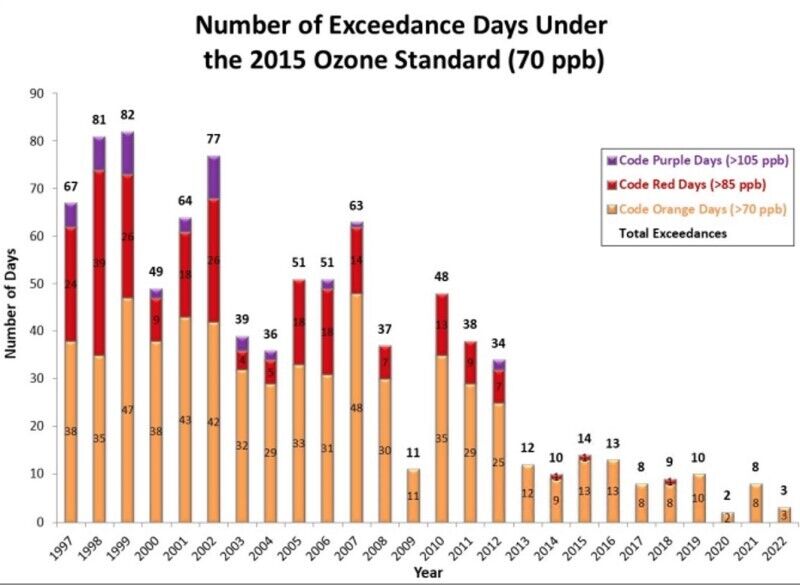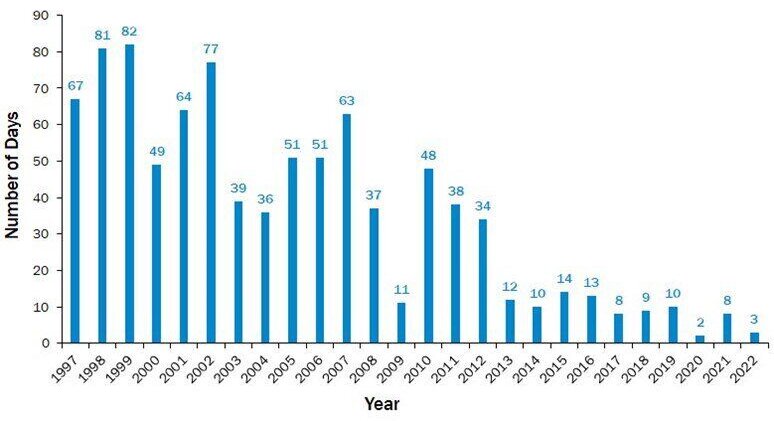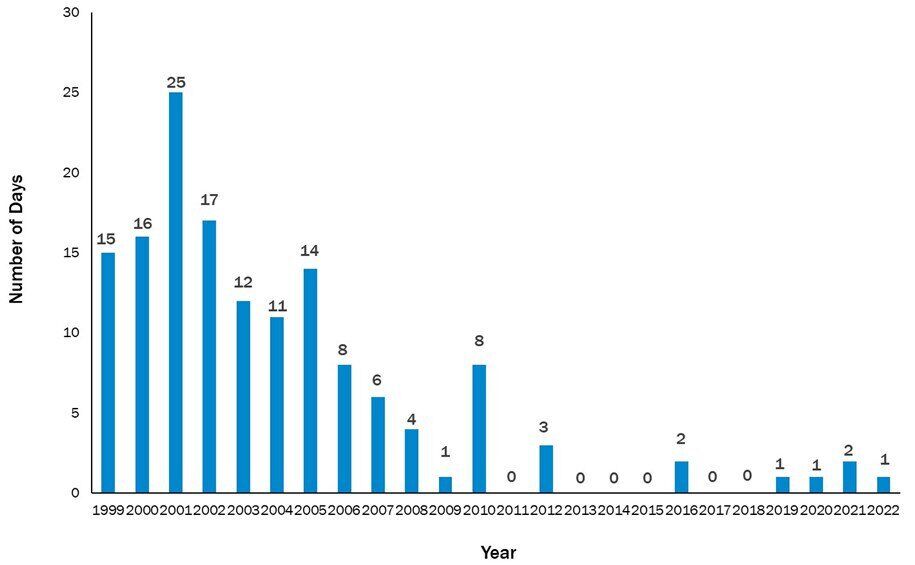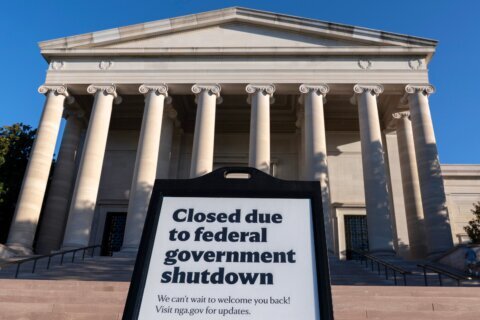Using words such as “huge” and “tremendous,” the air program chief with the Metropolitan Washington Council of Governments noted that air quality is continuing to improve in the region.
Data released in the 2022 Ozone Season Summary marks the best three-year period since COG began tracking air pollution in 1997.
Improvement was seen, for instance, in the Air Quality Index, which details when pollution is at a level of concern and merits such designations as Code Orange, Code Red or Code Purple.
“About a decade ago, we were seeing about 34 unhealthy air days, and those would either be Code Red or Code Orange days, which means it would be unhealthy for certain groups to breathe air. This year in 2022, we have only had three Code Orange days,” said Jen Desimone, COG’s air program chief.
The findings are still considered draft data that are typically not official until the next year.
This graph from COG shows how the number of unhealthy air days has declined.

“We have seen huge improvements in the region’s air quality over the last decade-plus, and it really is an effort on everyone’s part,” said Desimone, who credited individuals as well as local, state and federal agencies. “It really is a group effort that we have been able to see these tremendous improvements in air quality.”
Maryland, for example, announced Wednesday that as of this month, the state government had reduced energy use in state-owned facilities by more than 12% over the 2018 baseline, surpassing its 10% goal.
And the U.S. Army released its Climate Strategy Implementation Plan Wednesday targeting greenhouse gas emissions.
Desimone said a number of factors contributed to these improvements in air quality.
“Reductions in emissions are from power plants. They’re from transportation. We have a lot more environmentally friendly travel options. Teleworking is a really big one. Also, renewable energy and a lot of energy-efficient methods,” she said.
Refueling vehicles after dark, taking transit and carpooling can help, too.
“When everyone is doing their part, all of these add up to reduce emissions that form higher levels of pollution,” Desimone said.
There’s more than one layer to the good news of fewer unhealthy air days — the span of the geographical areas triggering alert days is shrinking.
“Ten-plus years ago, when it was a Code Orange day or a Code Red day, it was very common to see the entire metropolitan Washington region be unhealthy. Now, when we see a Code Orange or a Code Red day, it could potentially be measuring at one area or one monitor or potentially two monitors in the area,” she said.
“So we’re seeing even the geographical extent of our unhealthy days has shrunken. It’s much smaller than what it was a decade-plus ago.”
This graph from COG shows the number of unhealthy air days of Code Orange or worse, based on the 2015 Ozone Standard, since 1997. It reflects a decline of approximately 96% between 1997 and 2022.

Because there’s always room for improvement, Desimone said more people could take transit or telecommute, and she noted that more people, businesses and government fleets could switch over to electric vehicles and cleaner transportation options.
The 2022 draft data also suggest the region no longer is a non-attainment area — which means it’s measuring levels of ground level ozone that are below Environmental Protection Agency federal standards.
This graph from COG shows how unhealthy days due to fine particle pollution have significantly decreased to the point where the region now meets the daily and annual federal fine particle standards.

Poor air quality can affect the health of children, older adults and people with respiratory and heart conditions.








